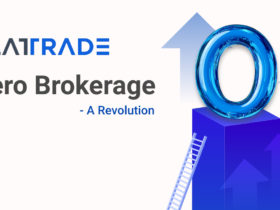As Asian Paints is set to declare its results, followed by other companies in the industry, we will look at its growth forecast and their path to recovery.
Paint companies are expected to clock better revenue growth at 10-12% this fiscal, as the companies in the industry are all set to regain lost ground due to the second wave of the pandemic, according to rating agency Crisil. The agency said that this growth forecast can be attributed to improving consumer sentiments and economic recovery. Two segments namely the decorative and the industrial segments are likely to benefit from the recovery.
In India, six players account for 96% of the revenue from the organised sector. According to Crisil, the Rs 53,000 crore industry is dominated by organised players which account for approximately 70% of revenue. Within the organised sector, decorative paints have a revenue share of approximately 77% and the rest is contributed by industrial paints.
Crisil Ratings’ Senior Director, Anuj Sethi, said, “Higher spending on home improvement and refurbishing, and a gradual increase in real estate activity is expected to drive revenue recovery of 11% in the decorative paints segment.:
He added that revenue recovery is expected to be more broad based this year. Demand is set to improve from urban areas as easing of pandemic-related curbs will drive growth. In addition, better rural incomes on the back of almost normal monsoon will help revival in rural areas, which account for a significant share of the decorative paints sold.
While the overall paint sector registered only 4% growth last year, the decorative segment had performed better due to strong demand from the hinterland, which was less impacted by the first wave.
In addition to decorative paint segment, new growth opportunities are visible in other segments like building chemicals, adhesives, wall putties, wood polish finishes, and other such products now being distributed through the same network. These segments contribute only around 5-10% to revenue, but help players in the decorative segment to offer more solutions in the home décor space.
The rating agency said that the other important segment which is the industrial paint segment is also expected to rebound from the slump of last year. Revenue from industrial paint segment is set for a sharp revival, with a growth of 13% this fiscal, compared with a de-growth of about 6% last fiscal due to weak automotive sales, which is about 50% of industrial paints’ demand, and a tepid economy, Crisil noted.
Therefore, better automotive sales are likely to drive industrial paints recovery, provided the auto sector production is not burdened by the chip shortage. Additionally, many new launches are being planned, especially in the passenger vehicle space and the government’s thrust on infrastructure will boost industrial paints consumption.
The industry’s operating margin is expected to be healthy at about 17%, though lower than the decadal high of about 19% last fiscal, according to Crisil. The lower operating margin forecast this year is due to an increase in crude prices and a sharp rise in raw materials cost, which accounts for 55-60% of the total input cost. Although, paint companies are increasing the prices of their products, they have been unable to offset the high input cost.
Crisil Ratings’ Associate Director, Shounak Chakravarty, said, “Credit quality of CRISIL-rated paint players will continue to be stable, supported by healthy cash generating ability, strong balance sheet and large cash surpluses, which stood at about Rs 7,000 crore as on March 31, 2021.”
He added that capacity utilisation was at 75-80% currently, and paint players are unlikely to go for sizeable capital expenditure in the next 12-18 months, though moderate investments will continue in backward integration/ debottlenecking of capacities.
The report by the agency also noted that top players in the industry have an upper hand despite the entry of new players in recent years. That’s because strong brand recall, established relationships with customers and wide distribution networks remain key entry barriers for new entrants.
Moreover, healthy growth prospects, companies with sizeable financial flexibility and established distribution network for allied products are expected to enter the sector.
Meanwhile, going forward, severity of the third wave of the pandemic, price fluctuation in crude prices, competitive intensity, and the rate of growth of the economy needs to be monitored for the continued growth of the sector.





